If you haven’t tried tsoureki (Greek Easter bread) before, then you are certainly missing out! Soft, fluffy, with a beautiful brown semi-soft crust and an amazing stringy texture. This is the most flavourful tsoureki recipe you will ever try!
While this Greek Easter bread (tsoureki) is traditionally served in Easter and the three braids symbolise the Holy Trinity, it is also very popular throughout the year as a delicious mid day snack, breakfast or tea or coffee companion.
What gives Tsoureki its unique flavour?
Greek Easter bread owes its full and rich flavour to the two aromatic spices used in this traditional tsoureki recipe, mastic and mahlab, which give it a really characteristic flavour and smell. Once put in the oven, the intense aromas of the sweet spices permeates my house and brings back all those wonderful childhood memories!
Freshly ground mastic (masticha), which is an aromatic spice from Chios island, and aromatic mahlab or mahleb (mahlepi), a spice made from ground seeds of cherry, are essential to prepare this tsoureki recipe. They give the traditional Greek Easter bread its sharp and distinctive taste so try your best to source some. You can purchase mastic and mahlepi at Greek grocers or online. I have included some links in the ingredients section below.
Tsoureki recipe – How to make the perfect Greek Easter bread dough
It is a common myth that making your own Greek Easter bread (tsoureki) is challenging even for an experienced cook. But experience has shown me that it’s all about having the right recipe! This is a no-fail tsoureki recipe (with all the prep photos) for you to succeed on your first time! And don’t forget to check out my video above for a hands on recipe showing you all my tips and tricks! If you have a bread machine, I’ve also made a specific tsoureki recipe in a bread machine just for you! So lets get started!
How to get the right tsoureki dough consistency
What I love the most about a traditional Greek tsoureki is that its always so soft and at the same time “stringy” when you tear into it by hand. For this tsoureki recipe, make sure to use extra strong white bread flour, which has plenty of gluten (protein). When buying your flour, check that it has a 13% protein content. This will help your tsoureki hold its shape once baked and will give it its amazingly stringy texture.
The most common mistake most tsoureki novices make is adding more flour than needed. Once the dough is mixed the dough will be a little sticky. If you add more flour if will result in your Greek Easter bread loosing its fluffiness. So be careful when adding more flour than this tsoureki recipe calls for and do so only if the dough is very sticky after kneading it for 15 minutes.
How to prove your tsoureki dough to perfection
Tsoureki dough is all about the right proofing, which means that the right temperature, an active yeast and adequate time are key to its success. First off, before making your tsoureki dough, make sure that all ingredients are at room temperature. This will guarantee that your dough will rise in a reasonable time frame.
In addition, make sure your yeast is nicely active. The first step in making tsoureki is activating your yeast and testing it to see whether it is alive. In the bowl of lukewarm water add a pinch of sugar and your yeast, dissolve it using a fork and cover with cling film. If the yeast is active you should see it bubbling up in about 6-10 minutes. If you don’t see bubbles, don’t use it as your tsoureki will turn out flat!
Finally give the dough time to rise. You will need to do 2 proves. The first prove is done after the dough is kneaded and is also known as bulk fermentation. This will take about 3-4 hours depending on how warm your home is. If you want to speed up the process put the covered mixer bowl with your dough in the oven and turn the oven light on or warm it up to 30C/85F. This will raise the oven temperature a little bit and accelerate the dough proofing. Don’t rush this step – its very important for the dough to double in size, be light and airy before you shape your Tsoureki, else it will turn out too “heavy”.
The second rise is done after the dough is shaped to Tsoureki loafs and is also known as the final rise. This will take about 1 hour or so and it’s finished when the braided tsourekia have puffed up nicely and have almost doubled in size again. This will inflate the dough on the inside making it light and fluffy.
How to shape your tsoureki dough
The secret to your tsoureki having that amazing stringy texture that we all desire while also being fluffy is the shaping.
- Weigh your dough and cut it up in 6 equal pieces.
- Form each piece in a little ball and roll with your hands.
- Then hold each edge and shake it up and down stretching it to form a dough “rope”. This will stretch the gluten in the dough and align it horizontally giving you that delicious texture!
- Finally shape it into barely tight braids. This will prevent the dough from expanding side ways when baking while allowing enough space for your tsoureki to grow during proofing and baking!
How long does tsoureki last?
Your tsoureki should last about 5 to 6 days in its top softness. Just make sure you cover it tightly in cling film. After that the tsoureki will start becoming stiff and stale. A little trick to revitalise old tsoureki is to cut a slice and pop it in the microwave for 10-15 seconds. This will warm the dough up and bring its softness back!
If you are making a large batch, you can bake them then freeze wrapped in cling film. They will last for up to 2 months. Defrost them by letting them sit at room temperature overnight, covered in some fresh cling film. They will taste just as amazing and fresh as when they came out of the oven!
Finally if you want your tsoureki to last even longer you can use my favourite trick and garnish this Greek Easter bread with syrup. This will give it extra moistness and help it keep fresh for up to 2 weeks.
Looking for more Greek Easter Recipes?
Why not take a look at my delicious hand picked recipes below
- Easy Tsoureki in a bread machine
- Tsoureki Muffins!
- Dyed Greek Easter eggs
- Koulourakia Greek Easter Cookies
- Lazarakia bread (Greek Easter Lazarus breads)
- All my Greek Easter Recipes
Oh and you can always read this recipe in Greek if you fancy Συνταγή για αφράτο πασχαλινό τσουρέκι με ίνες! Enjoy!
Stuff it with chocolate!
If you like an extra something in your tsoureki, try adding some chocolate spread in the braids! When you have stretched the braids out, flatten them out with a rolling pin, add a thin strip of Nutella and fold and pinch back into shape. Then proceed with braiding.
Print

Tsoureki recipe (Traditional Greek Easter bread)
- Prep Time: 300 min
- Cook Time: 35 min
- Total Time: 5 hours 35 minutes
- Yield: 2 breads (30 slices) 1x
- Category: Bread
- Method: Baked
- Cuisine: Greek
Description
A traditional Greek Easter Bread (Tsoureki) recipe! Discover all the secrets behind making the fluffiest, tastiest traditional Tsoureki with this step by step, no fail recipe!
Ingredients
For the dough
- 24g dry yeast (0.85 oz.)
- 110g lukewarm water (3.9 oz.)
- 3g ground mastic (0.1 oz.) (buy online in Australia, UK, US/CA)
- 10g ground mahleb (0.35 oz.) (buy online UK, US/CA)
- 135g butter, from cow’s milk, at room temperature (4.7 oz.)
- 230g sugar (8.1 oz.)
- 150g milk, at room temperature (5.3 oz.)
- 4 medium eggs, at room temperature (200g/ 7 oz. without their shells)
- 870g strong white (bread) flour (30.6 oz.)
- zest of 1 orange
To garnish
- 1 egg and 1 tbsp water
- almond slivers
For the syrup
- 150g sugar (3.5 oz.)
- 150g water (3.5 oz.)
Instructions
- To prepare this tsoureki recipe (Greek Easter Bread), add in a bowl the lukewarm water, a pinch of sugar and yeast and stir. Wrap well with plastic wrap and set aside for about 6-7 minutes, until the yeast rises and starts bubbling. Be careful not do add hot water, as it will kill the yeast, nor cold, as it will take forever for the Greek Easter bread to rise. The water should be at the same temperature as your finger, so check it out sticking one finger in; you should feel no difference in temperature.
- Use a pestle or a blender to ground the masticha and mahlepi, along with a pinch of sugar and set aside. These aromatic spices will give Greek Easter bread its distinctive taste and amazing smell. But be careful not to add any more mastic than this tsoureki recipe calls for, as it will leave a slightly bitter taste to your Greek Easter bread.
- In a saucepan add the butter, sugar and milk. Place over very low heat and stir the mixture, until the butter has melted and the sugar has dissolved. The key is to melt the butter at very low heat, so that the temperature doesn’t ‘kill’ the yeast. Remove the pan from the stove and check the temperature. The mixture should be lukewarm – the same temperature as your finger. If it is warmer, leave to cool down for a few minutes and check again.
- Pour the butter mixture in a large bowl and whisk in the eggs. Add the yeast mixture and whisk to combine.
- In the mixer’s bowl add the flour, the ground mastic and mahlepi, orange zest and the butter-egg-yeast mixture from step 4. Using the dough hook mix at first at low speed, until the ingredients start to combine and then mix at medium-high speed for about 15 minutes, until the dough doesn’t stick on the sides of the bowl. At this point the dough should be really soft, like seen in the picture and a little sticky. (Be careful not to add any more flour than this tsoureki recipe calls for, as the dough should be really soft and not firm).
- Cover the dough with plastic wrap and place in a warm environment, until at least it doubles in size (about 3-4 hours). If the environment is cold, preheat the oven at 30C/85F, turn it off and place the bowl inside.
- Gently deflate the tsoureki dough with your hands and cut in 6 equal portions (three for each Greek Easter bread). Take one piece of the dough (do not flour the working surface!) and roll it a little with your hands. Hold with your hands from the edges and shake to stretch the dough into a rope. This technique will help the Greek Easter bread (tsoureki) form the characteristic stringy texture, as seen in the picture.
- Form the Greek Easter bread into a braid and transfer on a large baking tray layered with parchment paper. Repeat the same procedure with the second tsoureki. Let the Greek Easter bread rise for about 1 more hour at room temperature or in the oven, until it puffs up and almost doubles in size, like in the pictures.
- In a small bowl add the egg and 1 tbsp water and whisk with a fork. Brush the top of each Greek Easter bread with the egg, being careful not to deflate it, garnish with almond slivers and bake in preheated oven at 150C / 310F fan for about 30-40 minutes, until nicely browned and fluffy. If its getting too brown too quickly cover with some parchment paper and continue baking.
- Although the traditional tsoureki recipe doesn’t call for syrup, garnishing Greek Easter bread with just a little syrup, always gives a little something! So it’s up to you to decide! Prepare the syrup for the Greek Easter bread just right before you turn the tsoureki out of the oven. In a small pot add the sugar and water and bring to the boil. As soon as the sugar dissolves, remove the pot from the stove and ladle the hot syrup over the hot tsoureki.
- Let the Greek Easter bread cool down and wrap well with plastic wrap, so that it doesn’t become hard and dry. Store for up to a 5-6 days at room temperature or up to a couple of months in the freezer.
Nutrition
- Serving Size: 1 slice
- Calories: 173kcal
- Sugar: 12g
- Sodium: 13.2mg
- Fat: 2.3g
- Saturated Fat: 0.9g
- Unsaturated Fat: 1.1g
- Trans Fat: 0g
- Carbohydrates: 33.3g
- Fiber: 0.9g
- Protein: 4.9g
- Cholesterol: 29.1mg
Tsoureki recipe image gallery:











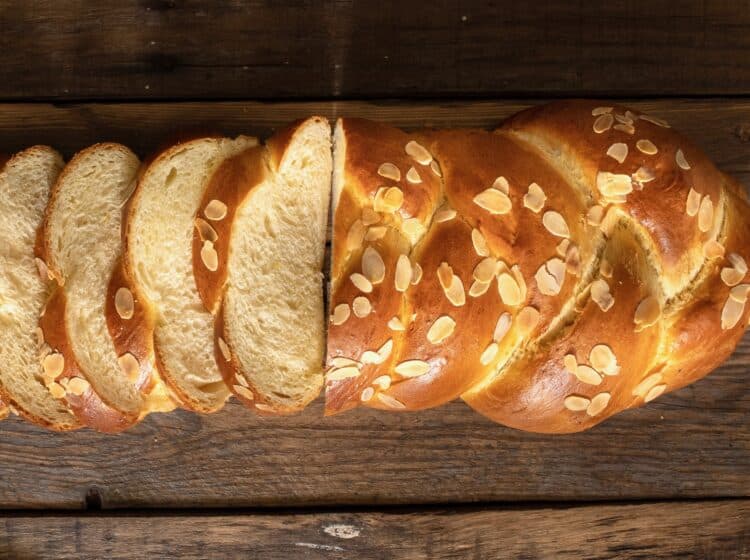
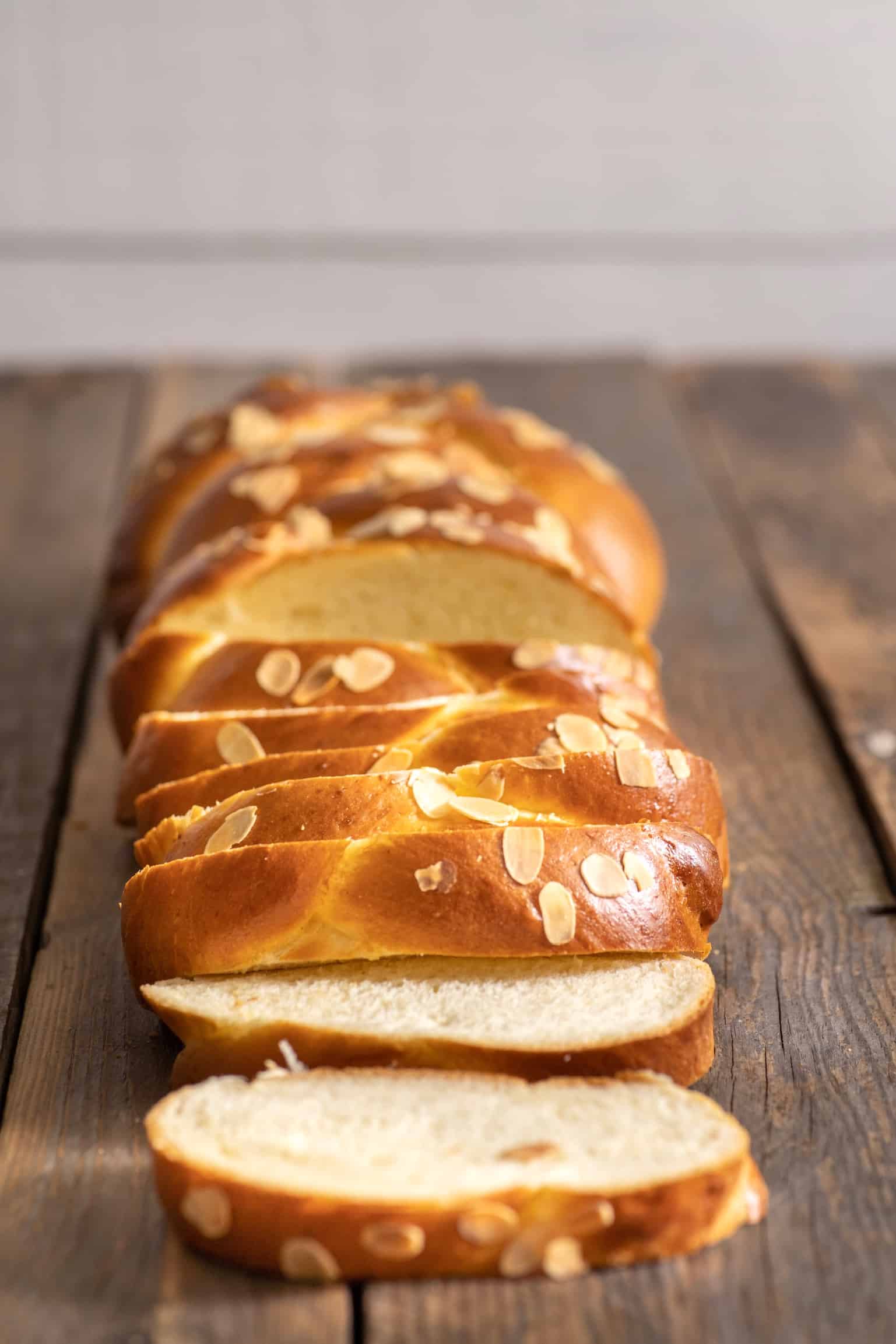
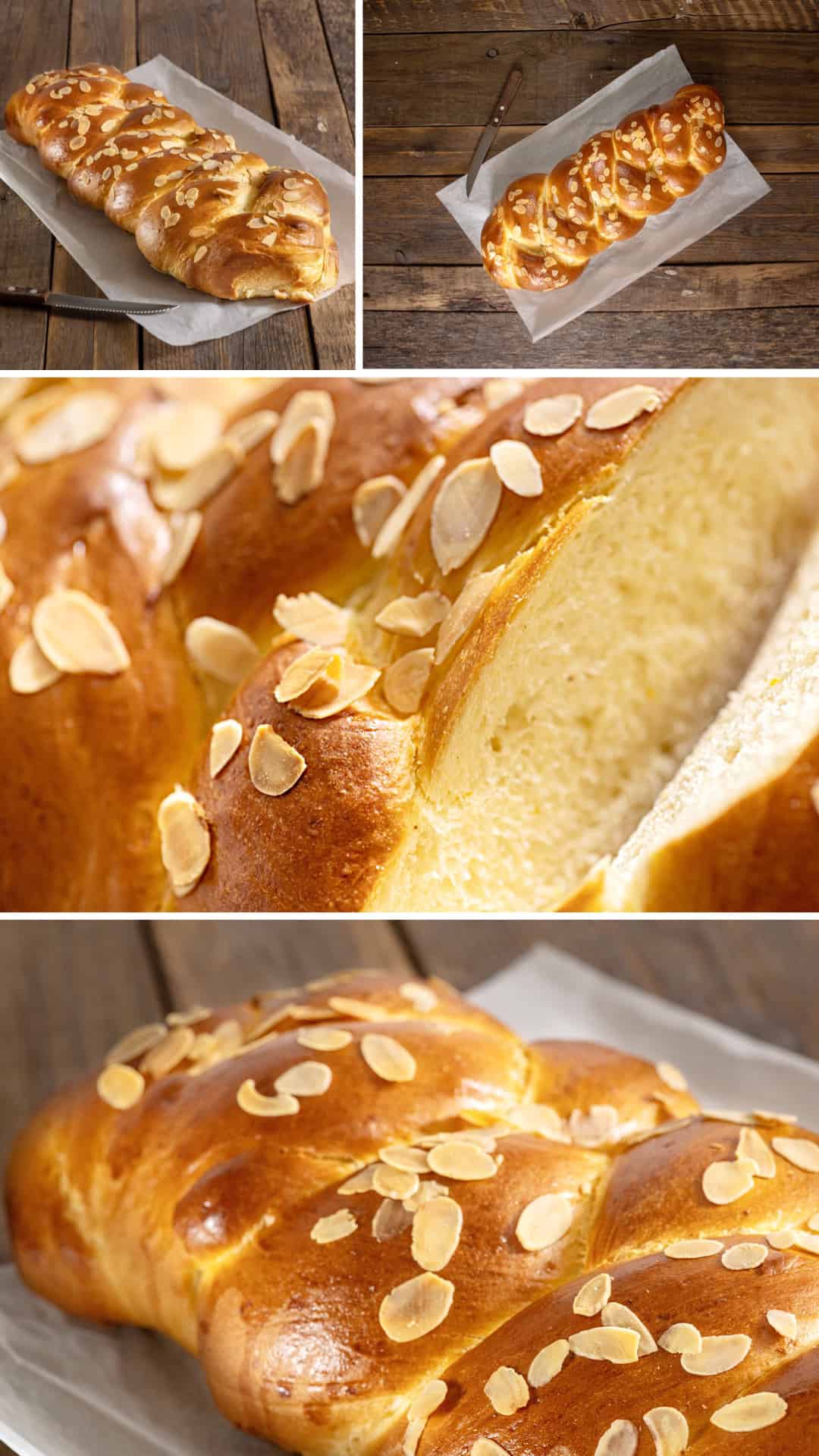
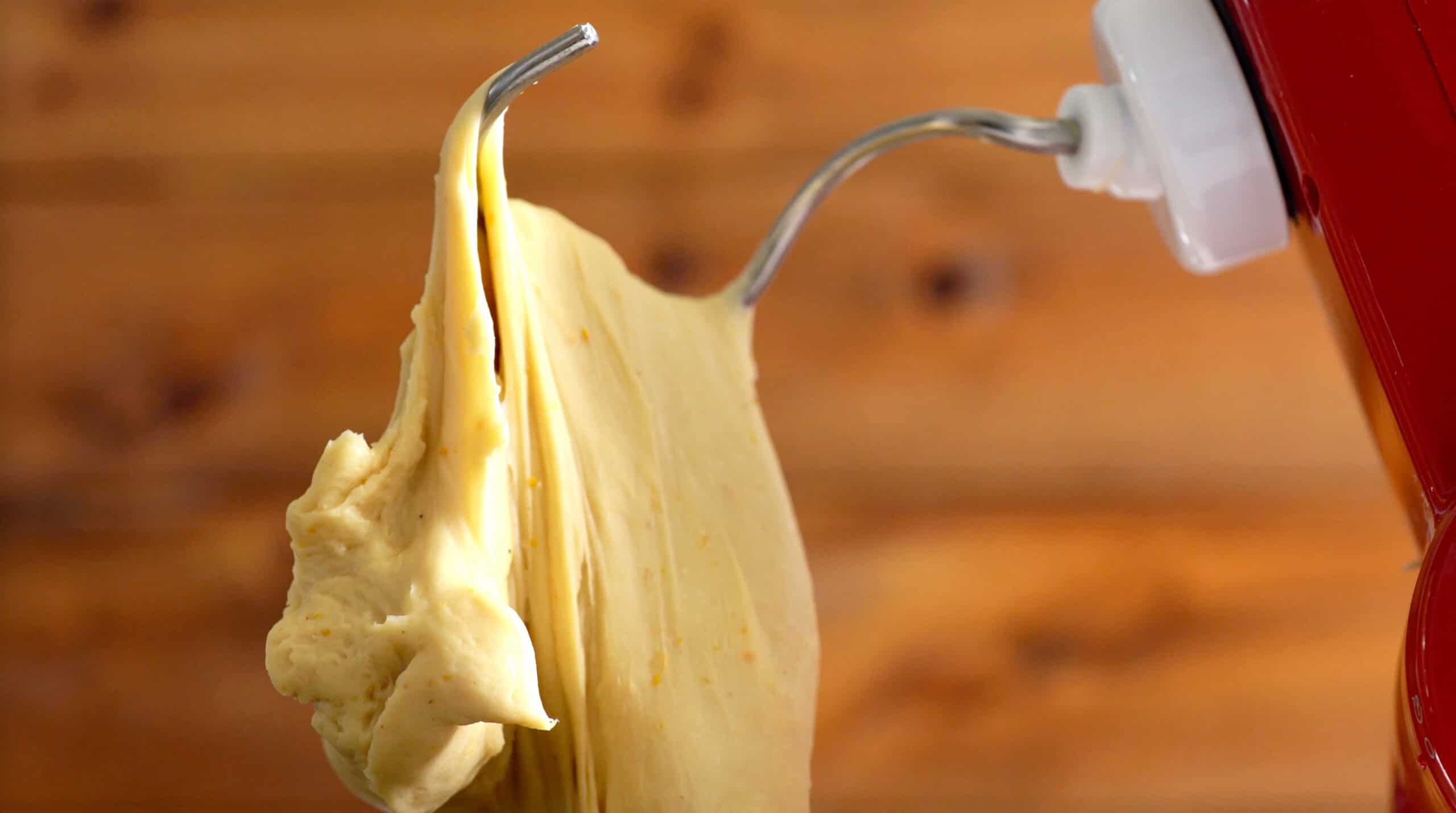
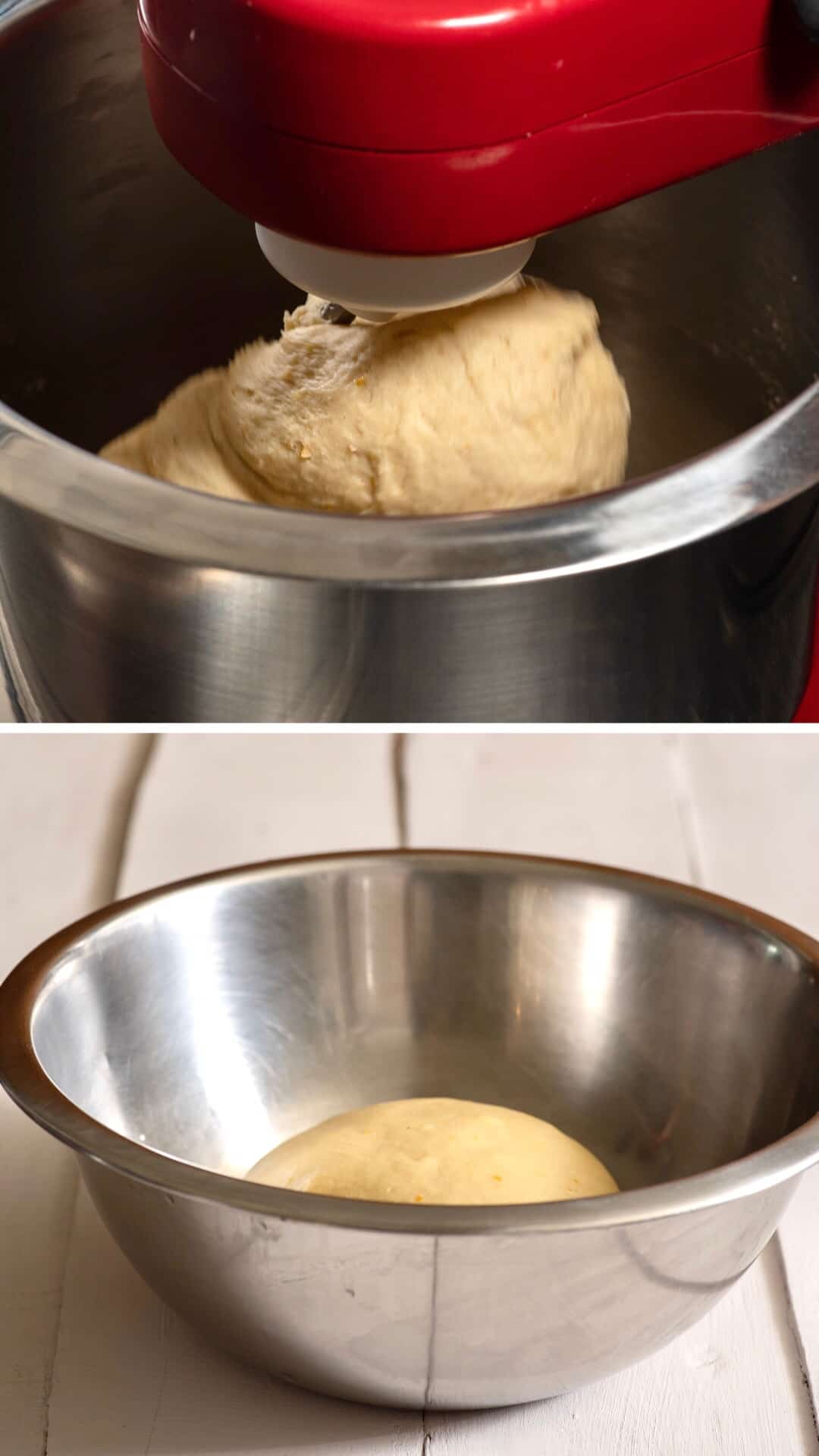
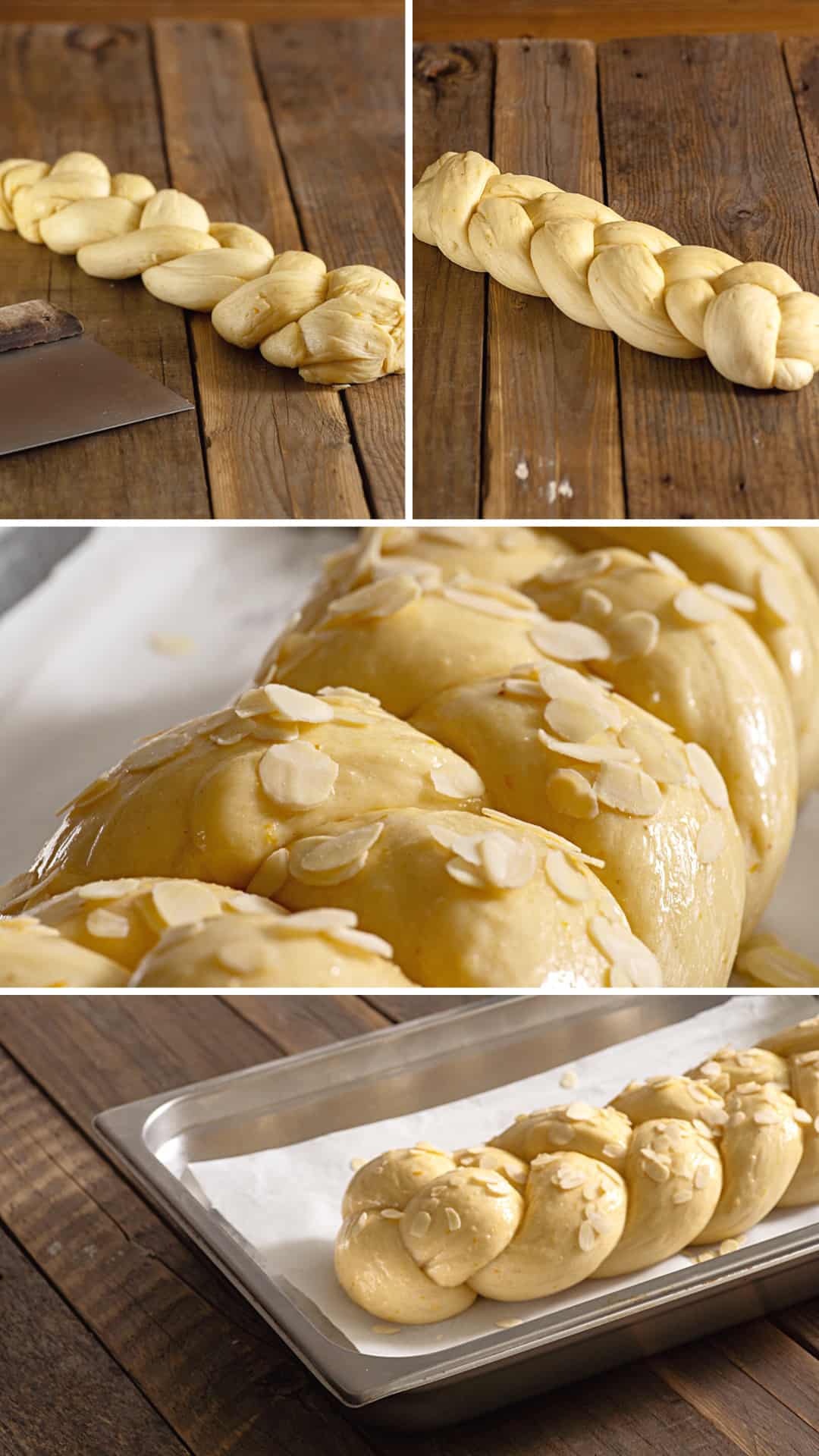
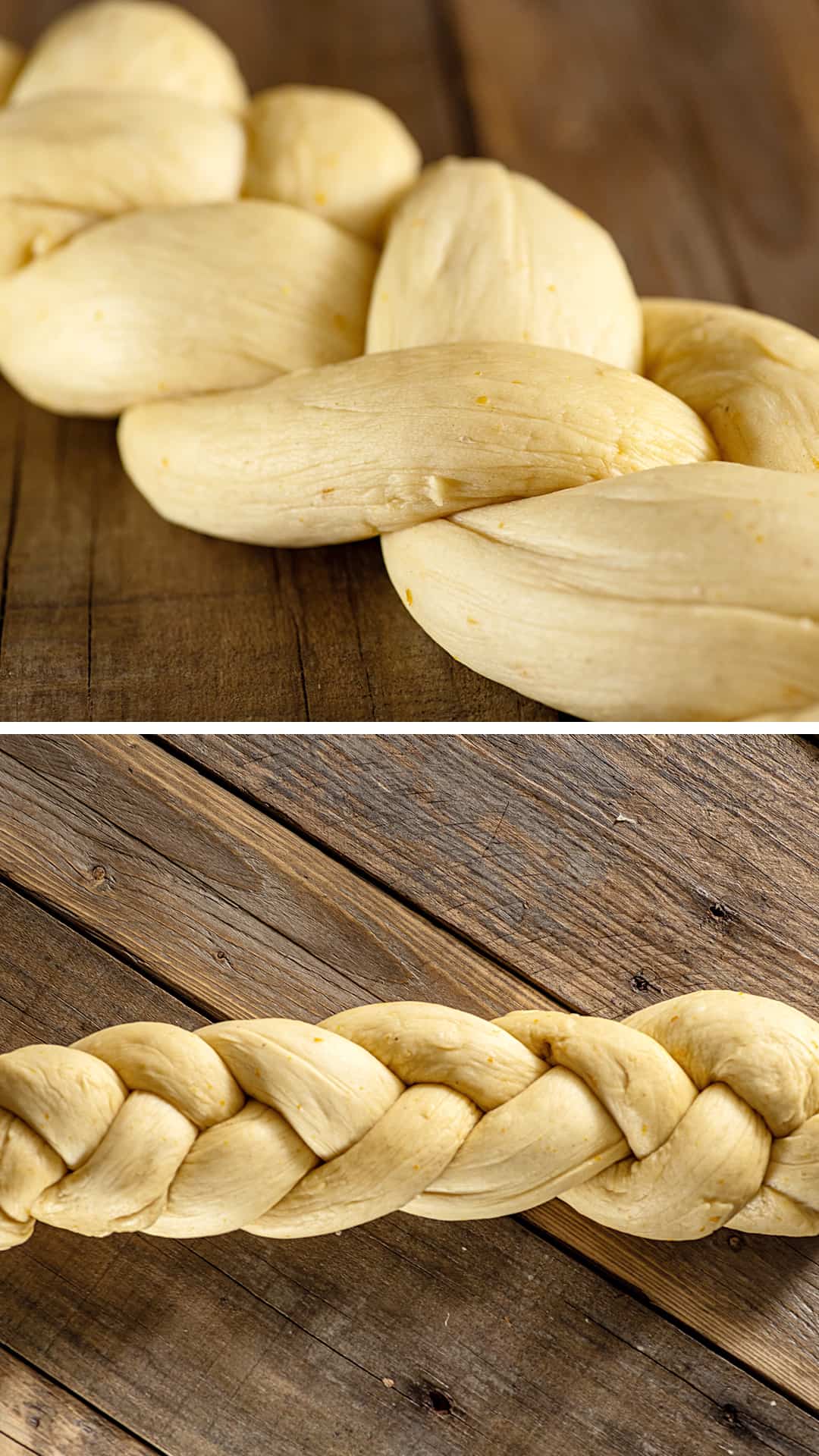
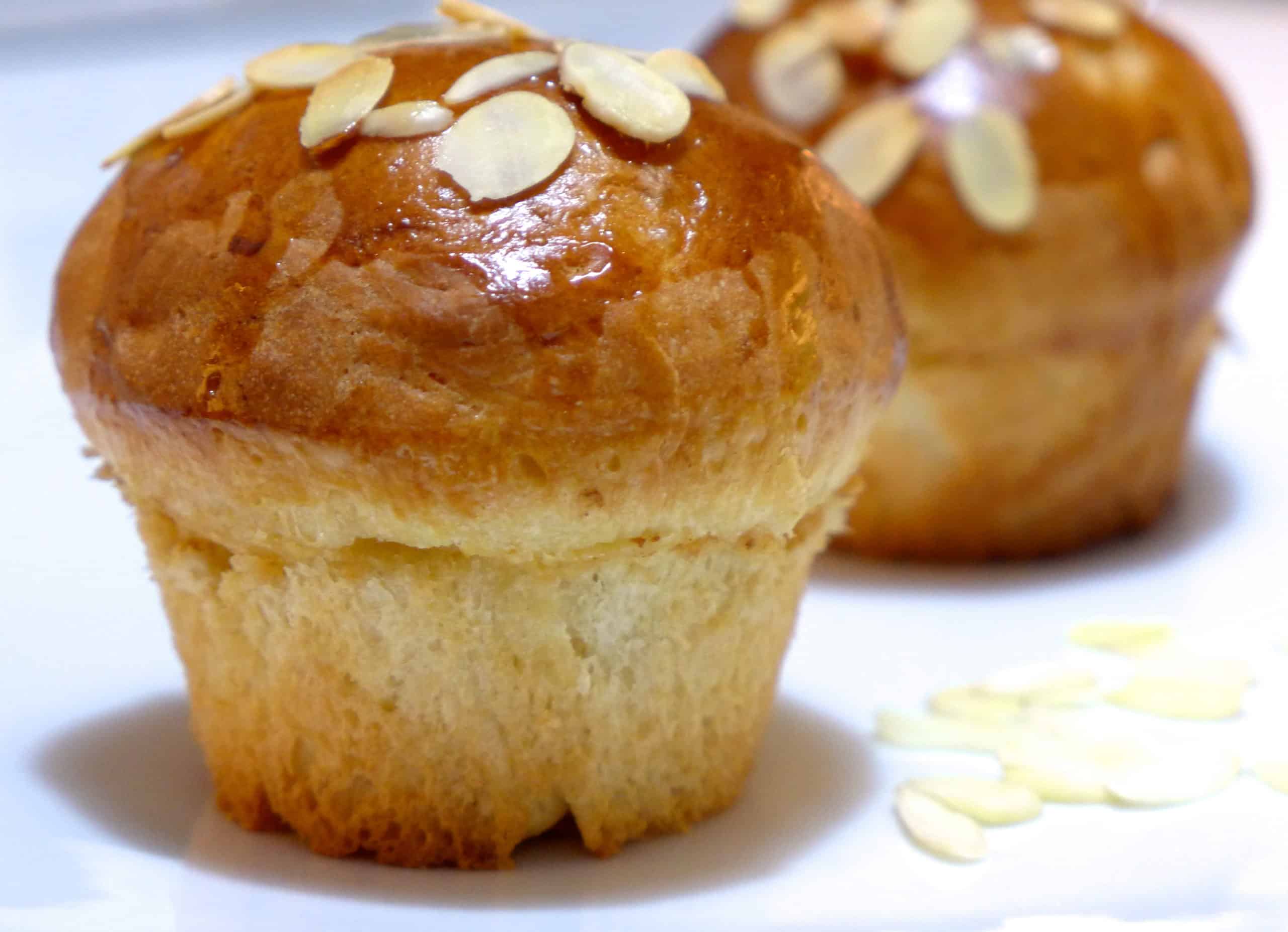

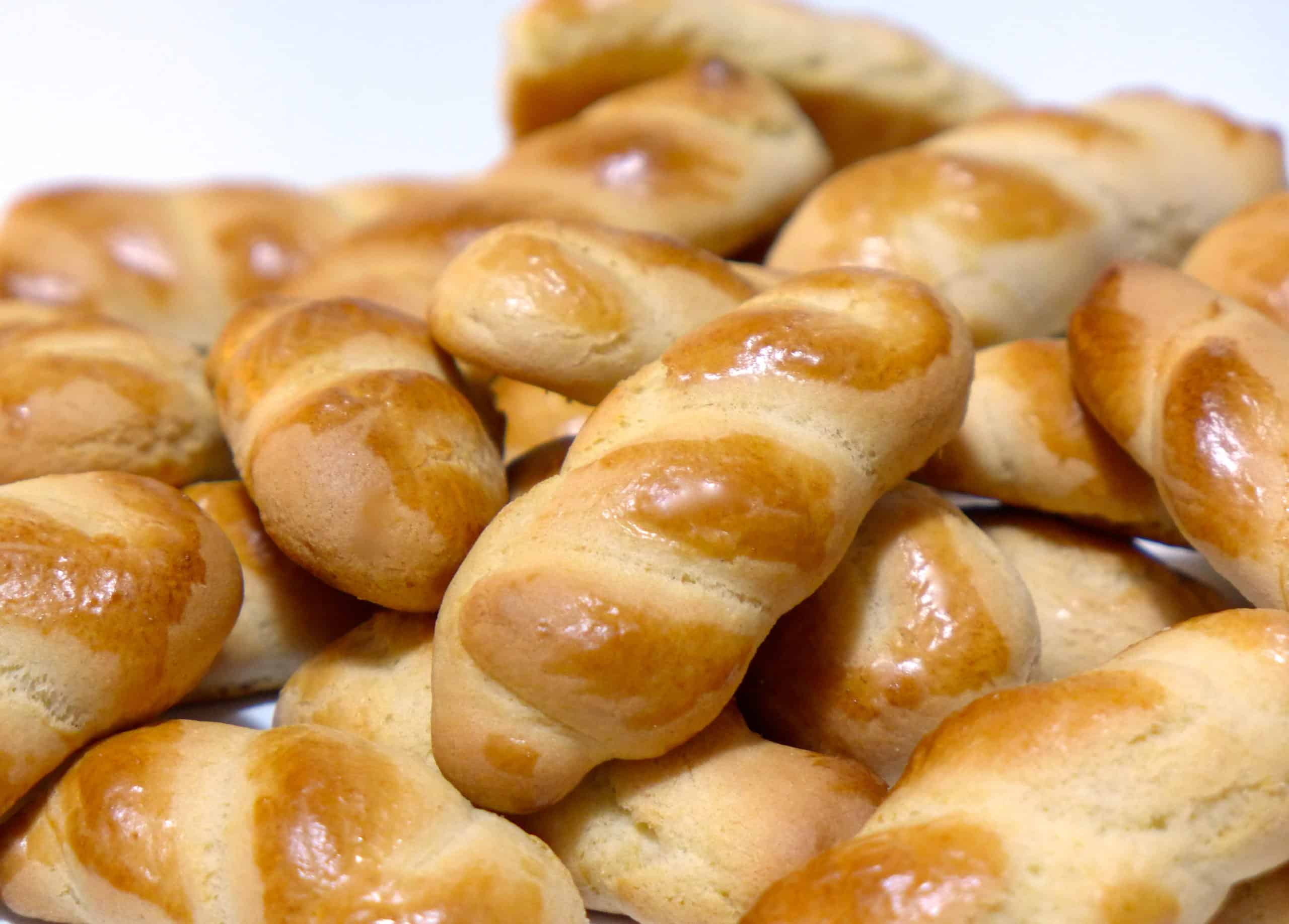
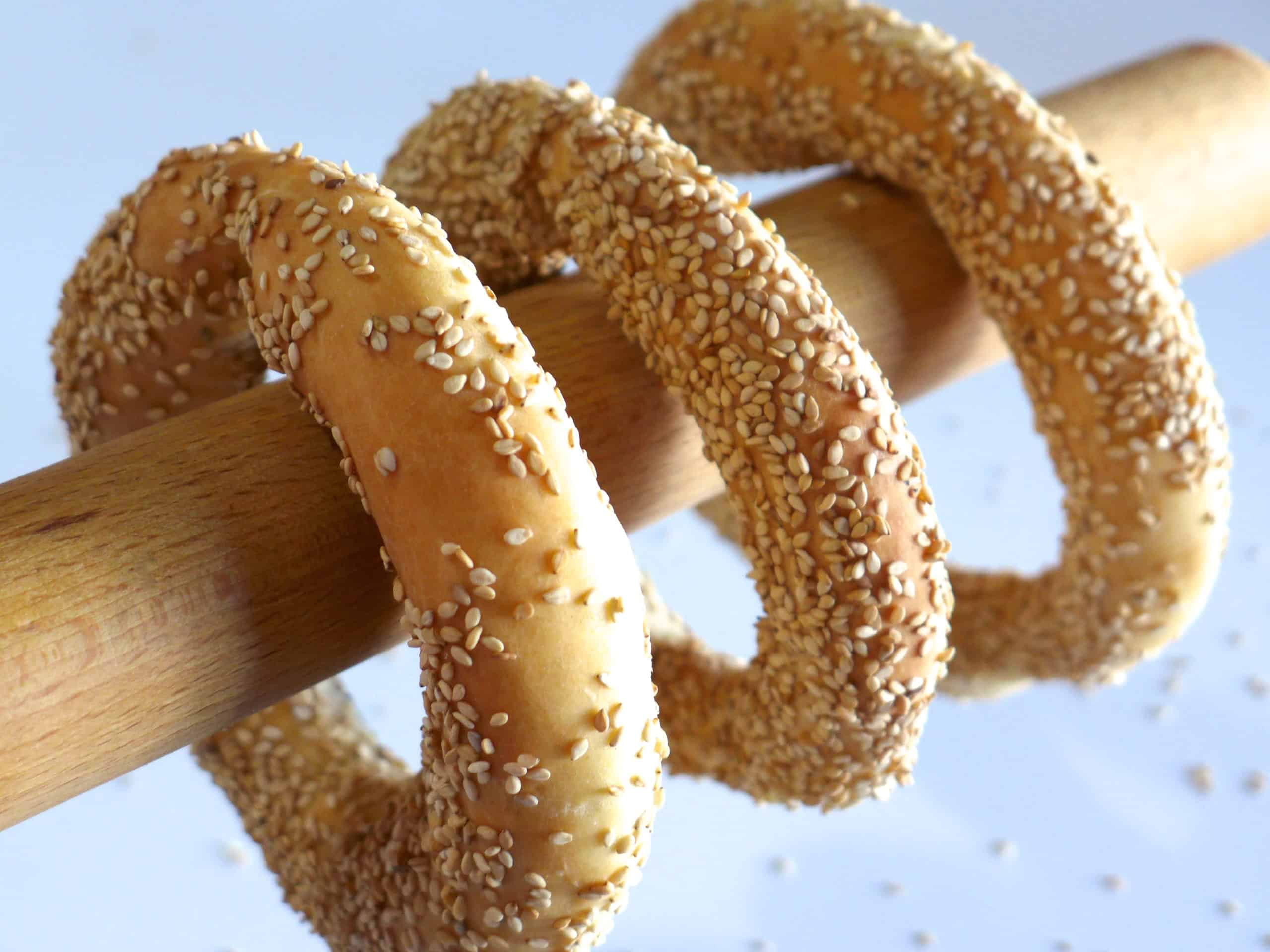

Oh my goodness, oh my goodness….they look divine! I have a recipe very similar and when I have made it in the past I was always a little confused why some worked out and others not. Your explanations are wonderful and now I know what I have to look out for when making it.
Easter – here I come!!!
Thank you. Maria 🙂
Το δοκιμασα. Εγινε πολυ καλο. Πιστευω πως θα χρειαζοταν λιγο περισσοτερο αλευρι γιατι
η ζυμη με αυτες τις αναλογιες κολουσε στη λεκανη του μιξερ. Επισης βρηκα καπως δυσκολες τις οδηγιες με τα μετρα οπως δινονται. Χρειασθηκε να ζυγιζω τα υλικα στη μικρη ζυγαρια.
Thank you sooooooo much for this AMAZING recipe …. my family ate it all and if they could they would of ate the plate with it too hahah that is how absolutely delicious it was
christos anesti
Thank you so much! It’s my favorite tsoureki recipe and the kids always end up wanting more 🙂 So glad you liked it!
I would like to make this recipe, I remember my godmother use to make it all the time. It was my favourite. However, I have a slight issue. I am allergic to dairy products. Can I use almond or coconut milk instead of regular milk? Also can I use coconut oil instead of the butter?
Hi Mary
I have not tried making it using coconut oil or milk substitutes. However I believe that soya milk might be better suited. Coconut oil should be ok as long as you like coconut flavour 🙂 Let me know how it goes, I’m keen to give it a go myself!
Love
Eli
I can’t use soya milk, I am allergic to it. I’ve used coconut oil with many recipes, and they turn out great. Soon I’ll try the recipe. When I do, I’ll let you know how it went. Thanks!
Ah I see… 🙁 Hope it turns out amazing and looking forward to your feedback!
Love
Eli
I’veused coconut milk as a substitute in other breads. If you use the carton and make sure it’s unsweetened it doesn’t have that much coconut flavor overpowering things.
Made this recipe for the first time and was amazing nice and fluffy and very light thank you for this wonderful recipe now I’m all organised for Easter don’t have to practise or find another recipe this is a keeper
Ah thank you Toula! Glad you liked it 🙂 Im off to make my own tonight 🙂
I noticed the recipe has no salt. I presume you are using salted butter, so I added 1tsp salt with the unsalted butter.
The recipe is nice, but the process pictures were especially useful since different mixers need different times to get to the right knead. My Kitchenaide 7qt needed only 12-13 min. I was worried about over kneading, but your picture assured me I got it right.
Thanks for a lovely recipe that I will share on Western Easter with my Wife’s Church and Orthodox Easter a week later for us.
hi there, I dont use salt as I wanted the dough to get really fluffy. Salt acts as an inhibitor to the yeast and regulates how quickly it rises, so I left it out on purpose. That being said, I see no reason why not using salted butter or adding 2 teaspoons of salt to the flour mix, after the yeast has been mixed in to avoid killing it 🙂
So glad you liked it! With tsoureki its always difficult to know when its done enough so decided to post as many pictures as I could 🙂
Love
Eli
Hi!
This will be the second time I have made tsoureki and I am very excited to try this one out! Based on this recipe, is there any tips that need to be said? Anything I have to be careful of?
Thank You!
Elli
Hi Elli
A couple of things to keep an eye on:
1. Double rise – let the dough rise once in the bowl and second time when they have been formed into a braid. That will make them extra fluffy and airy!
2. The syrup – I personally love my tsoureki sweet. So I always garnish it with some syrup to give it that extra bit of deliciousness. Dont worry, it wont get soggy, but it will have a delicious glaze around it!
3. Remember to use bread flour and be careful not to add more flour than necesary. The dough needs to be a little sticky at the end before making it into the braid. Also remember to shake the dough to form it into large strings, dont roll them as they will not be stringy when you eat them 🙂
4. Make sure the temperature of your room / oven is correct for proofing – not too hot but not too cold. It needs to be about 37C which is roughly body temperature.
I’ve got all my tips on the recipe but the above would be the top 4 to keep an eye for! And dont forget to check out my photos, the recipe is simpler than it sounds 🙂
Love
Eli
I am going to try this tomorrow. Thankyou for sharing xx happy Easter
Your welcome Connie! Happy Easter to you too!
Bravo polli orea!! just come out of the oven and it’s perfect! I know my kids will want a nutella version, do you just paste it on during construction of the plexoutha or?? Kalo pasxa
Hi Stuart
Yeap, flatten them out before braiding, add the nutella and roll into long strings, I’ve added a “how to” at the bottom of the recipe..
Love
Eli
Hi Eli!
a few questions – is there any reason that you do not knead dough after it rises in the bowl? Also, is bread dough good to use or not? As for yeast i will be using wet /fresh yeast (not dry in packets). Do you have a measurement for that. One piece of the wet yeast is equal to 3 packets (that is what the wrapper of fresh yeast says.
I dont knead a second time as I want to keep as much of the air inside as possible. Just gently deflate and form into the strings and braid.
Hm, fresh yeast is a difficult beast 🙂 It really depends on the yeast’s strenght and I find that it gives a slightly different flavour as well. A handy conversion is to multiply dry yeast weight by 3 when going for fresh yeast, so you will need ~60 grams of fresh yeast.
Love
Eli
Hi Eli. Can I use 1% milk ?
Eli, your recipe looks wonderful!. For years I have tried to make it from recipe of an elderly Aunt, but never had great results. Today I made it again using your recipe and am waiting now for the dough to proof. It is exactly as you describe and I am looking forward to bring it to completion. By the way, all of the recipes of yours that I have seen on here look excellent. Most are very similar to the way my family prepares the food. They are from the Kalamata region of Greece. May I ask what are you are from?
Sincere thanks,
Anthony
Hi Eli
Do you know how much 135g of milk is in mls or cups please
Maria
i made this last year and they came out a bit thinner than i wanted what measurements are the braids roughly using finger measurements
Hi Christina
They are roughly two – three fingers wide!
Hi there – I’ve made this recipe twice – measuring the ingredients exactly as the recipe states but my dough is more firm than sticky at the end. Not sure what I’m doing wrong? Any advice? Thanks Kathy
Hi Kathy
The flour used was probably a bit too strong or a bit too dry. Try starting with a little less flour and add as much flour as its needed for the dough to remain soft and sticky.
Hi. I made this for the first time today, although I have made Swiss zoph before which is a bit similar. I don’t have a mixer with a dough attachment but I do have a bread maker so I put the dough on the dough setting for about 30 minutes. I was really pleased with how light the bread came out. Unfortunately where I live (small country town in Australia) mastic is just too expensive and difficult to get but I ordered mahlepi online and love the smell of it. Since I can’t get the mastic should I increase the amount of mahlepi?
I didn’t read the instructions well about making two loaves so made one really big loaf.
Im a bit confused – does this ‘bakers bowl’ consist of an electric whisk? how do i combine the ingredients together?
Its a Kenwood chef (or you can use a similar appliance)
Hi I cant get Mastic or Mahleb in Singapore. Are there substitutes?
You can probably obtain both through the internet. Extract or essence of aniseed, along with some vanilla extract, will give you a very pleasant flavour, along with the orange zest that the recipe calls for. The taste of aniseed is similar to that of gum of mastic. Similarly, don’t use too much or else it may be bitter.
I use sesame seeds rather than almond on the surface.
I’ve bought mahlab off amazon, super easy to get!
can someone please give the measurements in cups spoons and oz.
You can find a conversion app on the Internet. You’ll find it easy to convert the units of measure.
Hi, is there a video for this recipe yet ???
I’ll be making one soon – got a bit busy with easter this year and did not have time to make one on time 🙁
I do not put mastic in my tsourekia, just the mahlep. Mother’s recipe from the island of Lesbos, did not use.
Personally I love the aroma of mastic so I prefer the tsourekia with it 🙂 But of course you can skip it if you want to.
Hi Eli,
I was just wondering which oven shelf level I should be baking the tsoureki on?
I tried making the tsoureki and it rose but also spread sideways a lot and was a lot more flat looking than your photos. Should I be putting it into a tin instead or is there something else that am I doing wrong?
They shouldn’t spread out – you need to try and braid them tightly as this will keep the dough in tension and prevent it from growing sideways 🙂
Hi Eli, I always make my brioche this way and it always turns out fluffy and airy. My friend’s mother gave me a recipe similar to yours once and I have been making it for many years even though I am not Greek, I love this treat a Easter.She told me I made a mean tsoureki which was quite a compliment from a Greek lady who had made it all her life.
Thanks for sharing as I know it will be successful. The trick is in the slow fermentation and time to rise. I often wrap the bowl in a blanket or put it in the bed between the sheepskin and the doona. Such a wonderful bread with coffee.As you say it is best all ingredients are warm when ready to use. The fresh yeast is always better to use and gives a better result than dry. Cheers and thanks again
Hi! I accidentally purchased the Mastic in its gum form. Am I still able to use it or should I take it out of the recipe?
Hi Stephanie, I don’t think that would work, it needs to be the resin I am afraid.
Thank you thank you THANK YOU!! This is THE best tsoureki recipie i have ever made, and i have made a few in the quest to find the hest most stringy-est! Your instructions were fantastic. So grateful. Thank you for sharing!
Your welcome Des! Im so happy you liked it and hope that it brought to you as much joy in making and eating it as it did to me 🙂 !!
Absolutely perfect! I have tried numerous times with varied success, but this recipe is dead on. I used the bread machine to do the heavy work, and followed your instructions for stretching the dough. Thank you for bringing some joy into this Easter!
Your welcome Andrea! Indeed what an easter its been! At least it brought a smile on your face :)!!
I tried this recipe for the second time (the first was about 3 years ago, the last time I made Tsoureki, and that was a hit too). The recipe is very good. The aroma it creates while baking is to die for. The taste is right up there with Yiaya’s – its that good!
Will be my go-to recipe every year.
Dimitri, thank you for your kind words! Indeed I absolutely love this recipe, its my favourite one for easter! Hope you all loved digging into it 🙂
Loved this but when I made it, it was a bit dense. Any ideas what I’m doing wrong? I don’t have a mixer so kneaded it by hand for roughly 35 minutes until it wasn’t sticky. Also used instant dry yeast, but still activated it.
It just needed a bit more proofing time. On occasion when my home was a bit colder I had to add an extra 2 hours to the proofing time. Let it rest until it doubles in size in bulk (before shaping) and also doubles in size after shaping. Just make sure your yeast is strong and alive by activating it before mixing the ingredients 🙂
Fantastic recipe. Well worth the effort. Thank you for sharing.
Thank you Malou for your great feedback! I hope that you love making my tsoureki 🙂
Hi, could I use castor sugar (superfine sugar) instead of normal sugar. Could also refrigerate the dough after kneading for 24hrs then allow to get to room temperature and continue the rest of the recipe???
Love this bread. What would make it a little too dry?
It might have been slightly over baked I’d guess. How long was it in the oven and at what temperature?
350 for 35 minutes.
Hi Pam, yeap the temperature was a bit on the high side. Should have been 310F 🙂
I measured all the ingredients but the dough was so heavy and dense. Also is it correct yonuse that much yeast of 21g?
Hi Lily, yes the dough should be like that when coming out of the mixer. You just need to get it to rest for a few hours so the yeast does its trick and inflates it with lots of bubbles! Indeed yes you need a decent amount of yeast for this bread as the dough is stringy and needs it to increase in volume 🙂
Thank you. I will try your recipe, I have been looking for a recipe noting all the tips for making the perfectly textured tsoureki. I have tried many in the past, but I think I may have hit the mark with this one. I’ll let you know how it goes.
Your welcome Christina! Im sure you’ll love it!
Χαίρετε κυρία Ελι,
I felt compelled to leave a comment and thank you for this fantastic recipe and the most thorough instructions.
I always read endless recipes and comments before deciding on the recipe I will make and I just want to spare anyone else from bothering to try any other tsoureki recipe than this one!
I have never in my life made more beautiful, tasty and simply perfect bread than I have today. I am immensely proud of the results and I wish I could post the images to prove how well they came out.
Thank you for all your time, effort and expertise. In the years to come when my friends or daughter one day ask me for the recipe, I will refer to it as Eli’s recipe because you fully deserve the recognition!
Καλό Πάσχα και καλή ανάσταση!
Annabelle! Thank you so so much for the great feedback and kind words! Im so happy it turned out amazing for you! I hope you all enjoy it και Καλη Ανάσταση!!
Hi just wondering if this recipe changed? I could’ve sworn I used less yeast last time I made it. Either way thanks so much this recipe is the best!!! Thanks!!
We’ve added a tiny bit (3 grams) more yeast to help with rising as we’ve noticed that on some occasions it takes too long to prove :). You can use a tiny bit less if you want but it does indeed work better with the half a teaspoon more.
I’m trying the recipe now.
I think I’ve developed a problem. I started to learn to bake a few weeks ago and now I can’t stop given my love for tsoureki. All these years I’ve bought it and I’ve now mastered to make it like “the good ones”. Not sure if the following helps anyone:
1. There’s no salt in this recipe, I found out the hard way that this causes the dough to rise a lot quicker than I’m used to when I was making challah and similar recipes. For this reason I had to make sure the strands stayed strong and thick so when the expand during rise they don’t split and look a bit too rustic.
2. The Mastika is a must – that and the orange zest for me just give the tsoureki the flavour I grew up with and love – wow.
3. Given the amount of yeast – you really need to let it rise for at least 3 hours. I had to punch it back to normal 3 times during the 3.5 rising time. It expanded so much! (Reference I used about 16g instant yeast)
4. I tried some almond meal in one and it tasted great, some protein and used 80g of sugar instead of 200g – because I usually eat the loaf on my own!
I wish I could share a photo of the ones I made! Anyway thanks for the recipe and all the amazing instructions. I will have to try your other recipes for other foods as I get more confident in the kitchen. Καλή χρόνια σε όλους
Thank you for your share. It is just the perfect recipe. I followed the explained steps and the result was fabulous. Best wishes from Istanbul…
I’ve been making this recipe for years! Its one of my favorite spring traditions. The only change I’ve made since I initially found this recipe was to starts with only 770 grams of flour in the mixer. I mix it for a couple minutes with a dough hook until it comes together, then transfer it to the counter – at this point is should still be very wet and viscous, spilling over the work surface. Then I knead by hand and only add flour until the dough stops sticking to the work surface and is tacky to the touch. You might need more or less flour based on your location and weather, but my most recent batch only needed around 780 grams
Hi Eli.
Could I use castor sugar (superfine sugar) instead of normal sugar. Could also refrigerate the dough after kneading for 24hrs then allow to get to room temperature and continue the rest of the recipe???
Eli.
Could I use castor sugar (superfine sugar) instead of normal sugar, if so would it be the same amountgiven super fine sugar is usuallya bit sweeter. Could also refrigerate the dough after kneading for 24hrs then allow to get to room temperature and continue the rest of the recipe???
Followed the recipe to the letter with the exception of using a teeny bit less flour and only 6 grams of mastiha. I kneaded by hand as I doubled the recipe. Dough was beautiful. I also had every intention of using the syrup but completely got sidetracked (next year!). Wow… just delicious, fragrant loaves. Not overpowering with mahlepi or bitter with mastiha as some recipes tend to be. Between your koulourakia recipe and this recipe, you make me feel like the queen of Easter treats. Καλη Ανάσταση!
Hi Eli
I am a complete novice in baking and i wouldn’t have even attempted to make tsoureki if it wasn’t for your receipe and explanations; you made it so much easier to follow. My tsourekia are in the oven as we speak, they are looking the part and I can’t wait to them. Thank you very much Eli, much appreciated xx
Hi Eli. This recipe is amazing THANK YOU for sharing with us. I found very helpful your explanation of some details. Happy Easter. Olga
Hi I’m really looking forward to making this bread. I havent tasted it in 40 years, a sweet memory of youth. I’m confused about the amount of yeast. I want to double the recipe and that calls for 1.7 ounces of yeast. About 1/4 of a cup. That seems really excessive. Any thoughts? Thanks, andrianna
I have made this for the past three years and it is delicious but it ALWAYS takes far more than 3 hours during the first rise.
Can you bake these in 9×5 loaf pans?
The BEST tsoureki recipe. I have been making this recipe for a few years. I adhere to the recipe but for putting a bit less mastic and adding flour as I go along (so I have never measured how much I actually use). I also add the mahlepi, orange zest and mastic in the liquid mixture. This year, I was obviously cursed (or rather inattentive) and not only did I over-proof at the second rising, I also burned the top of the tsourekia. Still absolutely delicious so that says a lot about how amazing this recipe is!
This was my first year baking Tsoureki and I followed this recipe. They turned out perfect!!! Even better than my Theia who bakes Tsoureki every year. I will be saving this recipe and baking it every year for Pascha!!
PERFECTION !!!
Thank you 🙂
Can I use my fridge to cold ferment and to proof.
I wouldn’t recommend it as the yeast quantity is enough for it to inflate the dough fully within the prescribed time. Also as it’s an enriched dough it may turn a bit too strong flavour wise if the eggs/butter stay in the fridge for too long while proofing. You could give it a try as nothing is preventing it from working but it will need some careful monitoring to make sure it doesn’t go bad.
I will try this recipe but 15 minutes of kneading makes me nervous! Will this not result in tough and dense bread? I have always understood that it is important not to overwork the dough.
Thank you so much for this amazing recipe, I am so pleased with the results!! First time ever to make thanks to you!! From Perth, Australia
Hi Eli; I followed your recipe to the “t”. I made the best looking and fluffy tsourekia I have ever been able to make. However they are not sweet at all, but they are fragrant with mastiha and mahlepi. The orange zest is hardly detectable. Any tips I can improve the taste ?
Fantastic! I had to knead by hand as I do not have a mixer. I kneaded for around 17 minutes and was perfect. A long time to knead on a hot day though.
I’m proud to say the first time I made tsoureki, it’s great! Yiayia is very happy with me.
Love this recipe. Much better than some Easter breads I’ve tried in the past. I did one loaf, easily halved the recipe. I also added 15 grams honey, and 8 grams salt (for the 1 loaf). I added the salt to the dough during the mixing phase.
It came out amazing, now will try with other flavorings, as the dough is just perfect.
Is it better to bake this on convection or conventional oven?